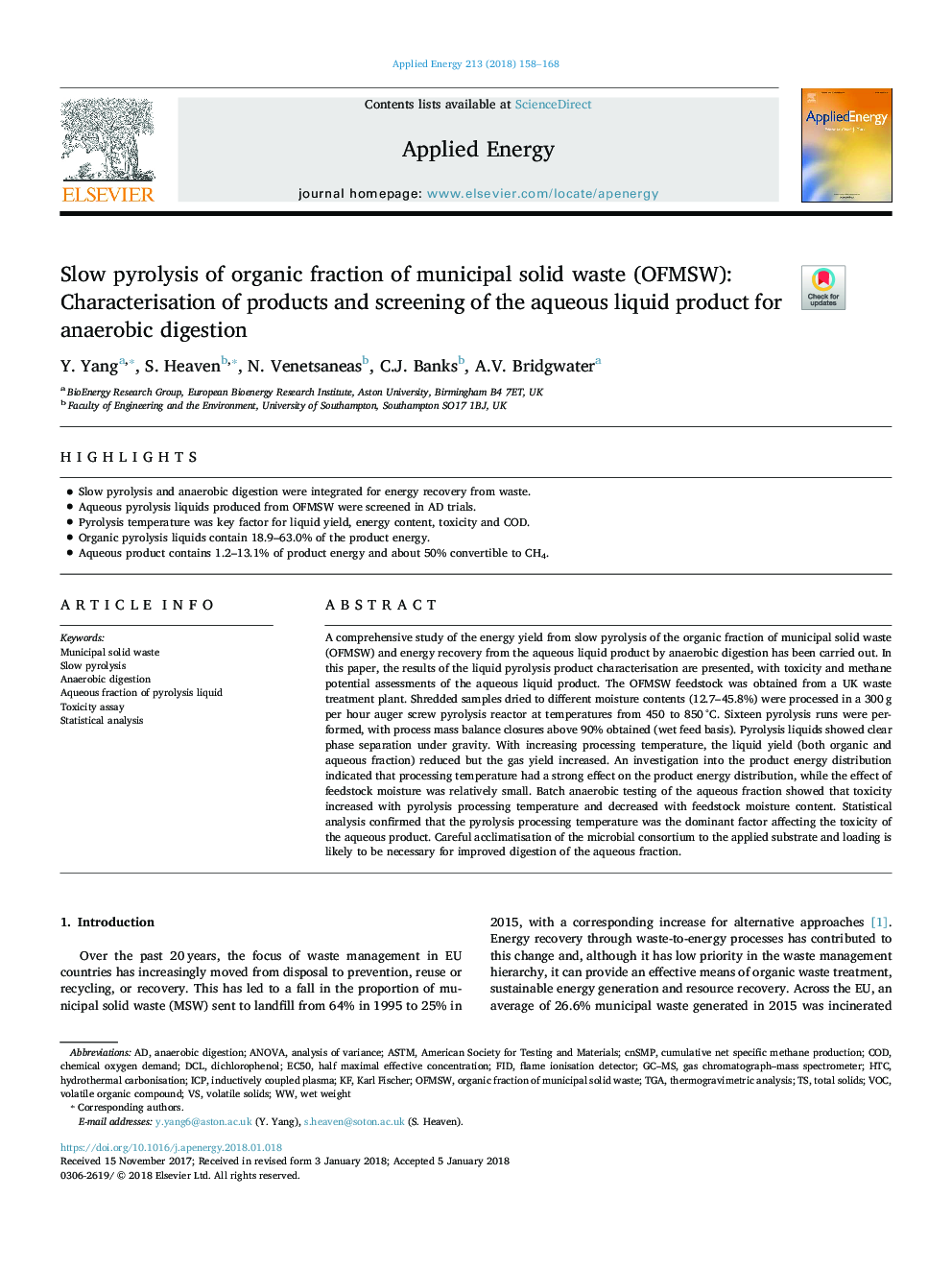| Article ID | Journal | Published Year | Pages | File Type |
|---|---|---|---|---|
| 6680766 | Applied Energy | 2018 | 11 Pages |
Abstract
A comprehensive study of the energy yield from slow pyrolysis of the organic fraction of municipal solid waste (OFMSW) and energy recovery from the aqueous liquid product by anaerobic digestion has been carried out. In this paper, the results of the liquid pyrolysis product characterisation are presented, with toxicity and methane potential assessments of the aqueous liquid product. The OFMSW feedstock was obtained from a UK waste treatment plant. Shredded samples dried to different moisture contents (12.7-45.8%) were processed in a 300â¯g per hour auger screw pyrolysis reactor at temperatures from 450 to 850â¯Â°C. Sixteen pyrolysis runs were performed, with process mass balance closures above 90% obtained (wet feed basis). Pyrolysis liquids showed clear phase separation under gravity. With increasing processing temperature, the liquid yield (both organic and aqueous fraction) reduced but the gas yield increased. An investigation into the product energy distribution indicated that processing temperature had a strong effect on the product energy distribution, while the effect of feedstock moisture was relatively small. Batch anaerobic testing of the aqueous fraction showed that toxicity increased with pyrolysis processing temperature and decreased with feedstock moisture content. Statistical analysis confirmed that the pyrolysis processing temperature was the dominant factor affecting the toxicity of the aqueous product. Careful acclimatisation of the microbial consortium to the applied substrate and loading is likely to be necessary for improved digestion of the aqueous fraction.
Keywords
EC50DCLOFMSWTGAASTMICPHTCVOCgas chromatograph–mass spectrometerGC–MSflame ionisation detectorSlow pyrolysisThermogravimetric analysisStatistical analysisanalysis of varianceANOVAVolatile organic compoundToxicity assaychemical oxygen demandTotal solidsvolatile solidsAmerican society for testing and materialsFIDDichlorophenolMunicipal solid wastehalf maximal effective concentrationAnaerobic digestionwet weightinductively coupled plasmaCodKarl FischerHydrothermal carbonisationorganic fraction of municipal solid waste
Related Topics
Physical Sciences and Engineering
Energy
Energy Engineering and Power Technology
Authors
Y. Yang, S. Heaven, N. Venetsaneas, C.J. Banks, A.V. Bridgwater,
